1. Chakraborty J, Pradhan D, Dutta HS, Nandi S, Chakraborty T. On good and bad intentions behind anomalous citation patterns among journals in computer sciences. Digital Libraries. 2018; arXiv:1807.10804v1. [cs.DL].
4. Ruela WS, de Almeida VL, Lima-Rivera LM, Santos PL, Porporatti AL, de Freitas PHL, et al. Does an association exist between the presence of lower third molar and mandibular angle fractures?: a meta-analysis. J Oral Maxillofac Surg. 2018; 76:34–45. PMID:
28688821.
5. Lima TC, Bagordakis E, Falci SGM, Dos Santos CRR, Pinheiro MLP. Pre-emptive effect of dexamethasone and diclofenac sodium associated with codeine on pain, swelling, and trismus after third molar surgery: a split-mouth, randomized, triple-blind, controlled clinical trial. J Oral Maxillofac Surg. 2018; 76:60–66. PMID:
28675812.

6. Anchieta RB, Guimarães MVM, Suzuki M, Tovar N, Bonfante EA, Atria P, et al. Nanomechanical assessment of bone surrounding implants loaded for 3 years in a canine experimental model. J Oral Maxillofac Surg. 2018; 76:71–79. PMID:
28893541.
7. Maluf G, Caldas RJ, Silva Santos PS. Use of leukocyte- and platelet-rich fibrin in the treatment of medication-related osteonecrosis of the jaws. J Oral Maxillofac Surg. 2018; 76:88–96. PMID:
28675810.

8. Susarla SM, Evans KN, Kapadia H, Vasilakou N, Egbert MA, Hopper RA. Distraction osteogenesis normalizes mandibular body-symphysis morphology in infants with Robin sequence. J Oral Maxillofac Surg. 2018; 76:169–179. PMID:
28734994.

9. Shirzadeh A, Rahpeyma A, Khajehahmadi S. A prospective study of chin bone graft harvesting for unilateral maxillary alveolar cleft during mixed dentition. J Oral Maxillofac Surg. 2018; 76:180–188. PMID:
28774851.

10. Troeltzsch M, Probst FA, Rominger A, Müller-Lisse U, Probst M, Obermeier K, et al. Comorbidity assessment in patients with oral squamous cell carcinoma: can imaging techniques (fludeoxyglucose positron-emission tomographic computed tomography and contrast-enhanced computed tomography) provide additional information? J Oral Maxillofac Surg. 2018; 76:190–198. PMID:
28646645.

11. Anand R, Shankar DP, Manodh P, Devadoss P, Aparna M, Neelakandan RS. Short-term evaluation of gustatory changes after surgical removal of mandibular third molar-a prospective randomized control trial. J Oral Maxillofac Surg. 2018; 76:258–266. PMID:
28732220.

12. Zou L, He D, Ellis E. A comparison of clinical follow-up of different total temporomandibular joint replacement prostheses: a systematic review and meta-analysis. J Oral Maxillofac Surg. 2018; 76:294–303. PMID:
28919368.

13. Quinelato V, Bonato LL, Vieira AR, Granjeiro JM, Tesch R, Casado PL. Association between polymorphisms in the genes of estrogen receptors and the presence of temporomandibular disorders and chronic arthralgia. J Oral Maxillofac Surg. 2018; 76:314.e1–314.e9. PMID:
29175417.

14. Alawode AO, Adeyemi MO, James O, Ogunlewe MO, Butali A, Adeyemo WL. A comparative study of immediate wound healing complications following cleft lip repair using either absorbable or non-absorbable skin sutures. J Korean Assoc Oral Maxillofac Surg. 2018; 44:159–166. PMID:
30181982.

15. Malaviya P, Choudhary S. Zygomaticomaxillary buttress and its dilemma. J Korean Assoc Oral Maxillofac Surg. 2018; 44:151–158. PMID:
30181981.

16. Lee JK. Dental management of patients on anti-thrombotic agents. J Korean Assoc Oral Maxillofac Surg. 2018; 44:143–150. PMID:
30181980.

17. Khorasani M, Janbaz P, Rayati F. Maxillofacial reconstruction with Medpor porous polyethylene implant: a case series study. J Korean Assoc Oral Maxillofac Surg. 2018; 44:128–135. PMID:
29963494.

18. Braimah R, Taiwo A, Ibikunle A, Oladejo T, Adeyemi M, Adejobi F, et al. Clinical experience in managing temporomandibular joint ankylosis: five-year appraisal in a Nigerian subpopulation. J Korean Assoc Oral Maxillofac Surg. 2018; 44:112–119. PMID:
29963492.

19. Saghiri MA, Asatourian A, Sheibani N. Angiogenesis and the prevention of alveolar osteitis: a review study. J Korean Assoc Oral Maxillofac Surg. 2018; 44:93–102. PMID:
29963489.

20. Lee DH, Kim IK, Cho HY, Seo JH, Jang JM, Kim J. Effect of herbal extracts on bone regeneration in a rat calvaria defect model and screening system. J Korean Assoc Oral Maxillofac Surg. 2018; 44:79–85. PMID:
29732313.

21. Mamoun J. Dry socket etiology, diagnosis, and clinical treatment techniques. J Korean Assoc Oral Maxillofac Surg. 2018; 44:52–58. PMID:
29732309.

22. Abouelhuda AM, Khalifa AK, Kim YK, Hegazy SA. Non-invasive different modalities of treatment for temporomandibular disorders: review of literature. J Korean Assoc Oral Maxillofac Surg. 2018; 44:43–51. PMID:
29732308.

23. Adetayo AM, James O, Adeyemo WL, Ogunlewe MO, Butali A. Unilateral cleft lip repair: a comparison of treatment outcome with two surgical techniques using quantitative (anthropometry) assessment. J Korean Assoc Oral Maxillofac Surg. 2018; 44:3–11. PMID:
29535963.

24. Yu SB, Song BG, Cheon KJ, Kim JW, Kim YH, Yang BE. Clinical reliability of zirconium abutment in implant restorations in the English and Korean literature. Maxillofac Plast Reconstr Surg. 2018; 40:26. PMID:
30206540.

25. Kakar A, Kakar K, Sripathi Rao BH, Lindner A, Nagursky H, Jain G, et al. Lateral alveolar ridge augmentation procedure using subperiosteal tunneling technique: a pilot study. Maxillofac Plast Reconstr Surg. 2018; 40:3. PMID:
30687682.

26. An JH, Park SH, Han JJ, Jung S, Kook MS, Park HJ, et al. Treatment of dental implant displacement into the maxillary sinus. Maxillofac Plast Reconstr Surg. 2017; 39:35. PMID:
29204419.

27. Yoon CS, Kim MK, Kim YS, Lee SK. In vivo protein expression changes in mouse livers treated with dialyzed coffee extract as determined by IP-HPLC. Maxillofac Plast Reconstr Surg. 2018; 40:44. PMID:
30613574.

28. Shin SH, Kang YJ, Kim SG. The effect of botulinum toxin-A injection into the masseter muscles on prevention of plate fracture and post-operative relapse in patients receiving orthognathic surgery. Maxillofac Plast Reconstr Surg. 2018; 40:36. PMID:
30538972.

29. Jung HM, Lee JE, Lee SJ, Lee JT, Kwon TY, Kwon TG. Development of an experimental model for radiation-induced inhibition of cranial bone regeneration. Maxillofac Plast Reconstr Surg. 2018; 40:34. PMID:
30525010.

30. Mantelakis A, Iosifidis M, Al-Bitar ZB, Antoniadis V, Wertheim D, Garagiola U, et al. Proportions of the aesthetic African-Caribbean face: idealized ratios, comparison with the golden proportion and perceptions of attractiveness. Maxillofac Plast Reconstr Surg. 2018; 40:20. PMID:
30206536.

31. Seok H, Kim SG, Kim MK, Jang I, Ahn J. Effect of the masseter muscle injection of botulinum toxin A on the mandibular bone growth of developmental rats. Maxillofac Plast Reconstr Surg. 2018; 40:5. PMID:
29588910.

32. Oh JH. Recent advances in the reconstruction of cranio-maxillofacial defects using computer-aided design/computer-aided manufacturing. Maxillofac Plast Reconstr Surg. 2018; 40:2. PMID:
29430438.

33. Hwang BY, Choi BJ, Lee BS, Kwon YD, Lee JW, Jung J, et al. Comparison between anterior segmental osteotomy versus conventional orthodontic treatment in root resorption: a radiographic study using cone-beam computed tomography. Maxillofac Plast Reconstr Surg. 2017; 39:34. PMID:
29204418.

34. Kutkut A, Bertoli E, Frazer R, Pinto-Sinai G, Fuentealba Hidalgo R, Studts J. A systematic review of studies comparing conventional complete denture and implant retained overdenture. J Prosthodont Res. 2018; 62:1–9. PMID:
28666845.

35. Castillo-Oyagüe R, Sancho-Esper R, Lynch CD, Suárez-García MJ. All-ceramic inlay-retained fixed dental prostheses for replacing posterior missing teeth: a systematic review. J Prosthodont Res. 2018; 62:10–23. PMID:
28735678.

36. Yamaguchi S, Yamanishi Y, Machado LS, Matsumoto S, Tovar N, Coelho PG, et al. In vitro fatigue tests and in silico finite element analysis of dental implants with different fixture/abutment joint types using computer-aided design models. J Prosthodont Res. 2018; 62:24–30. PMID:
28427837.

37. Warin P, Rungsiyakull P, Rungsiyakull C, Khongkhunthian P. Effects of different numbers of mini-dental implants on alveolar ridge strain distribution under mandibular implant-retained overdentures. J Prosthodont Res. 2018; 62:35–43. PMID:
28625664.

38. Nasution H, Kamonkhantikul K, Arksornnukit M, Takahashi H. Pressure transmission area and maximum pressure transmission of different thermoplastic resin denture base materials under impact load. J Prosthodont Res. 2018; 62:44–49. PMID:
28606420.

39. Kim DY, Kim JH, Kim HY, Kim WC. Comparison and evaluation of marginal and internal gaps in cobalt-chromium alloy copings fabricated using subtractive and additive manufacturing. J Prosthodont Res. 2018; 62:56–64. PMID:
28663024.

40. Egilmez F, Ergun G, Cekic-Nagas I, Vallittu PK, Lassila LVJ. Does artificial aging affect mechanical properties of CAD/CAM composite materials. J Prosthodont Res. 2018; 62:65–74. PMID:
28647224.

41. El-Damanhoury HM, Gaintantzopoulou MD. Self-etching ceramic primer versus hydrofluoric acid etching: etching efficacy and bonding performance. J Prosthodont Res. 2018; 62:75–83. PMID:
28651905.

42. Tada H, Masaki C, Tsuka S, Mukaibo T, Kondo Y, Hosokawa R. The effects of Lactobacillus reuteri probiotics combined with azithromycin on peri-implantitis: a randomized placebo-controlled study. J Prosthodont Res. 2018; 62:89–96. PMID:
28756115.

43. Kubo M, Komada W, Otake S, Inagaki T, Omori S, Miura H. The effect of glass fiber posts and ribbons on the fracture strength of teeth with flared root canals restored using composite resin post and cores. J Prosthodont Res. 2018; 62:97–103. PMID:
28843642.

44. Pelo S, Gasparini G, Garagiola U, Cordaro M, Di Nardo F, Staderini E, et al. Surgery-first orthognathic approach vs traditional orthognathic approach: oral health-related quality of life assessed with 2 questionnaires. Am J Orthod Dentofacial Orthop. 2017; 152:250–254. PMID:
28760287.

45. Varga S, Spalj S, Anic Milosevic S, Lapter Varga M, Mestrovic S, Trinajstic Zrinski M, et al. Changes of bite force and occlusal contacts in the retention phase of orthodontic treatment: a controlled clinical trial. Am J Orthod Dentofacial Orthop. 2017; 152:767–777. PMID:
29173856.

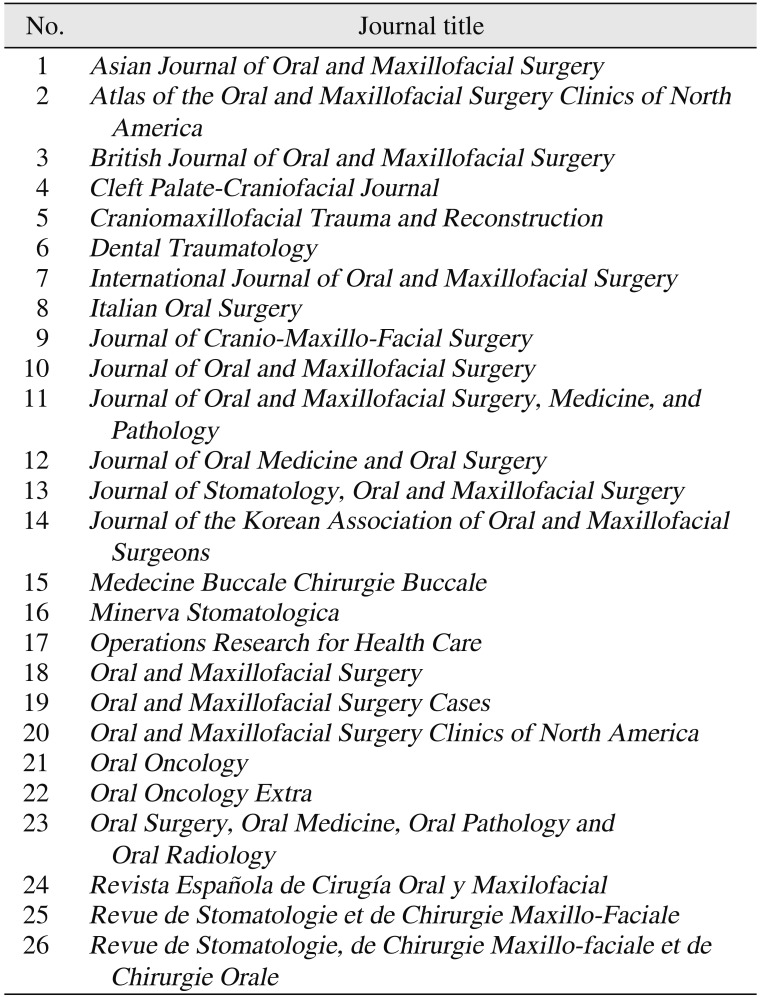
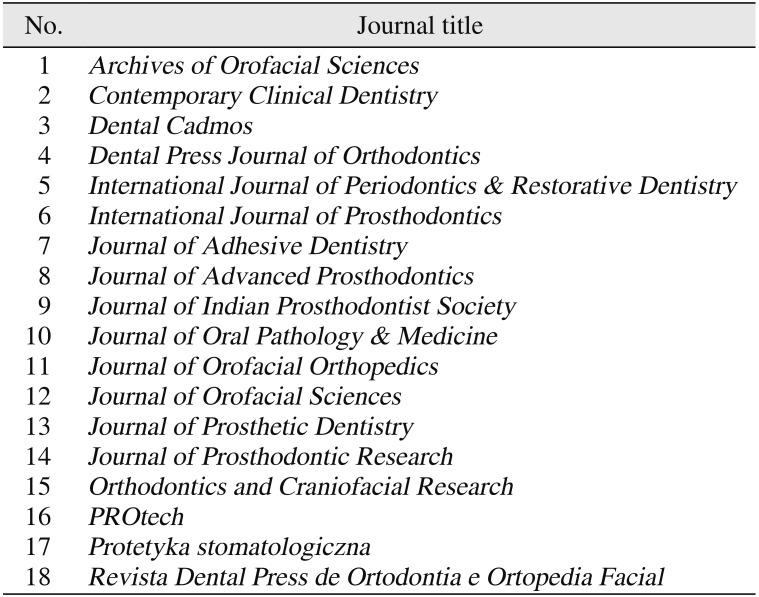
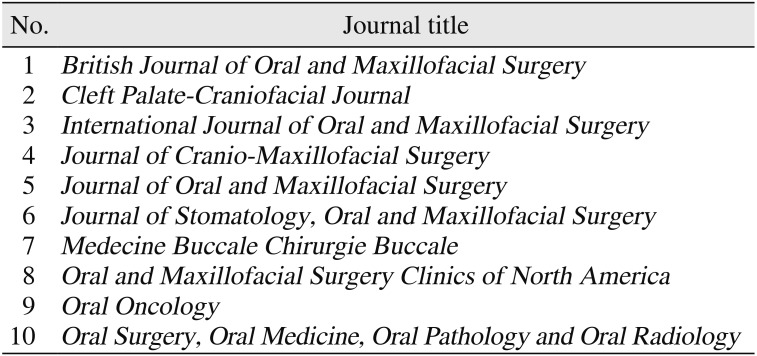
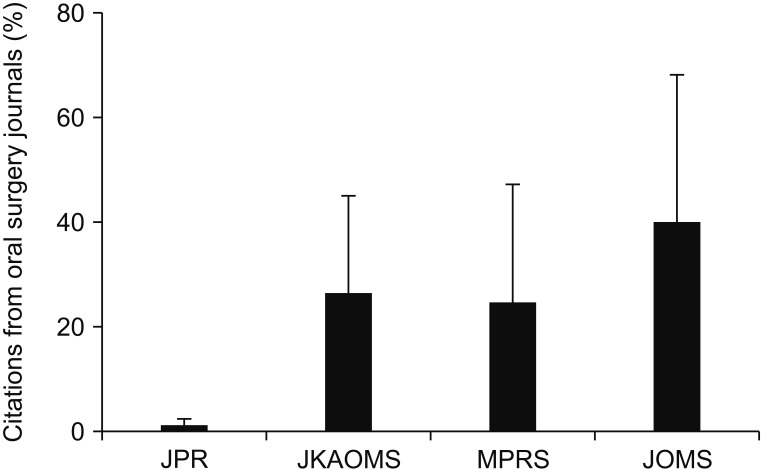
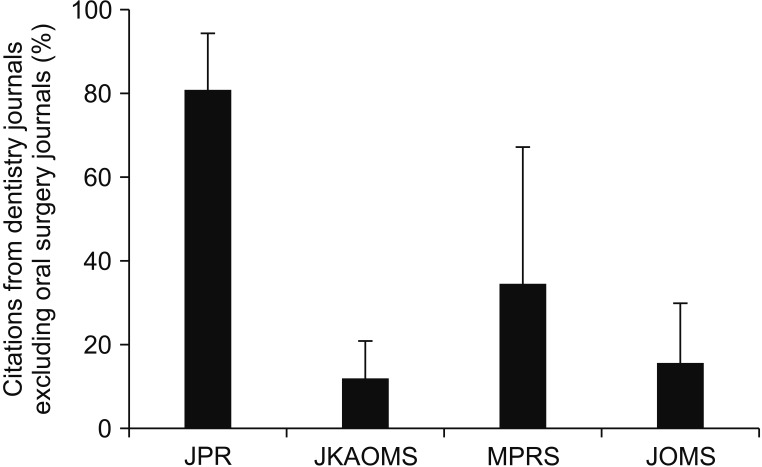




 PDF
PDF ePub
ePub Citation
Citation Print
Print



 XML Download
XML Download